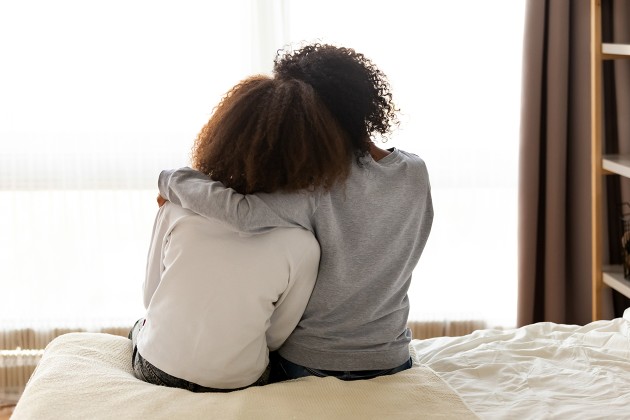Dear Highlights Podcast: Body Image Issues

Kids write to Highlights to tell us how they feel about their bodies. And the news is not good. When most adults are also unhappy with their bodies, how can we help kids to relate to their bodies, and to food, in a positive way? Editor-in-Chief Christine French Cully and Hillary Bates, Director of Purpose and Impact, talk with Nutritional Scientist Dr. Kendrin Sonneville, who studies the prevention of eating disorders and how to create a healthy body image and discuss:
- What a healthy body image actually looks like
- What we are getting wrong about kids and eating disorders
- Putting kids’ pandemic weight gain in context
Christine notes that one of the stumbling blocks that prevents children from feeling confident is a dislike of their bodies. This is common among kids and can be super harmful.
There have been more letters now about body image issues than in the past. Christine shares three recent letters kids have written about their body dissatisfaction.
I hate myself. I think I am fat and ugly. I try hard to be more positive, but I can’t seem to think any better about myself.
I have little self-esteem when it comes to how I look. I know I’m not ugly, but I certainly feel like it most days. Every day I look into the mirror and see a different person than yesterday. Sometimes I think my face is round, which I hate. The next day it’s nice and heart shaped. I’m completely flustered. My sister said she can’t tell any difference, but why can I then? I do things that make me feel better, like exercising, but this problem still occurs. I’m sad to say that I can’t help but look into a mirror whenever I pass one to see how I look. I wasn’t always like this and don’t want to remain this way. Help!
I’m invited to a pool party, but really don’t want anyone to see me in a swimsuit. Would it be rude to go to the party in my regular clothes and not get in the water?
Christine and Hillary start the conversation by asking Dr. Sonneville about how grown-ups can help kids develop a positive body image and healthy thinking about food. They also inquire about how common it is for kids to be very concerned about their appearance.
It’s very common for children to have concerns about their appearance, but it depends on how they define it.
Dr. Sonneville shares that it’s very common for children to have concerns about their appearance, but it depends on how they define it. Are they a little dissatisfied or very dissatisfied? It also depends on what age the child is. She notes that unfortunately body dissatisfaction increases throughout childhood. She says that at about age 5 or 6 body image issues are very low, but they go up and up as a child grows.
Christine asks if some groups of kids are more at risk of having persistent negative ideas about their looks than other groups? Dr. Sonneville notes that body image issues are universal and are experienced by kids no matter their background. “There’s a myth that white girls are most at risk; however, data show that body dissatisfaction is high among all groups of kids,” she says. She explains that kids in larger bodies, though, are typically more at risk than other groups because they perceive that their bodies deviate from what they think is the ideal.
Hillary mentions how people might think that kids who are higher weight need to change their bodies to be healthier, even if that’s not true. She asks about how having a negative impression about your body as a kid can affect you doing things that are healthy for you. Dr. Sonneville shares that “a child is not going to be helped by hearing a comment [from peers or grown-ups] about their body size or shape.” They’re already receiving messages from media and advertising that their bodies are not acceptable, so they don’t need additional messages that suggest there’s something problematic about their bodies. “Shame does not predict good outcomes,” says Dr. Sonneville. Positive messages about a child’s body will motivate them to make healthy choices about food and exercise.
Christine, Hillary, and Dr. Sonneville discuss the language related to body size. The language has changed over time, but it’s important to let kids and families decide how they talk about bodies. Children and adults can decide what words feel comfortable for them and which ones feel stigmatizing or harmful.
Christine asks about what parents and other caring adult should do if they’re seeing signs that a child might need extra support related to body image. Dr. Sonneville says that it’s important to be on the lookout for behaviors that are done for the explicit purpose of weight control, such as
- Eating fruits and vegetables because they think they have no other option
- Exercising for the purpose of weight control or changing their size
- Engaging in negative comments about other people’s bodies or their own
It’s essential to deconstruct harmful body image behaviors, Dr. Sonneville says. She suggests asking questions like, “What makes you think that losing weight would make your body healthier than it is now?” As well as something as simple as, “Why do you feel that way about your body.”
Christine asks Dr. Sonneville to share what a healthy body image look like. She explains that a healthy body image is when the way people think about their bodies and their self-worth are totally separate. Kids should be able to separate what their body does and who they are from how their body looks.
The conversation shifts to kids and eating disorders and what we might be getting wrong about that topic. There are a lot of misconceptions about eating disorders, Dr. Sonneville explains, namely who gets eating disorders. There’s an assumption that eating disorders are more prevalent in thin, white girls. However, everyone is at risk for an eating disorder, but medical providers often diagnose to the stereotype and those who don’t fit into that stereotype miss out on treatment. Dr. Sonneville also says that body image concerns can make kids turn to dieting. She explains that dieting can deprive a child of food and their brain becomes preoccupied with food, which is a perfect storm for developing an eating disorder.
Dr. Sonneville stresses that eating disorders are serious mental health diagnoses that have a higher mortality rate than nearly all mental illnesses, and in younger populations, they have the highest mortality rate. Therefore, tying eating disorders to vanity or something that can be “opted out of” is a “grave miscalculation of the seriousness of eating disorders.”
Hillary shares about how it can be difficult for grown-up to talk to children about body image issues because adults often body image issues as well. She explains that issues shared in letters to Highlights are things that, as an adult, you can remember experiencing, but they’re in the past. However, when it comes to body image issues, that’s often not the case. Adults might be living in bodies they’re not comfortable in. Hillary asks how adults can break the cycle and talk to children about feeling comfortable in their bodies and have a positive body image.
Dr. Sonneville advises to have self-compassion as an adult. It’s frustrating to have body image concerns and see your child struggling as well, wondering if you contributed to it. It’s important to acknowledge that eating disorders have a strong genetic component, she notes, and parents with eating disorders are likely to recognize those symptoms in their kids, which is good because kids can get treatment sooner. She encourages parents to surround themselves with supportive people who don’t buy into messages of “thin supremacy” or “diet culture.” Having a support network of body neutral or body positive people is incredibly helpful, along with being mindful of what messages are being consumed on social media.
When talking to children about body image, Dr. Sonneville notes that it’s important for adults to
- Not comment on a child’s body size
- Be mindful of how they self-talk about their own bodies or other people’s bodies
- Avoid messages that suggest that someone’s worth is tied to the way their bodies look
Hillary mentions that there’s been a lot of talk about pandemic weight gain and how our bodies changed during quarantine, and she asks Dr. Sonneville what parents can do now to promote the health of their child. She recommends instilling in children the idea that “we can celebrate diversity in bodies in the same way that we celebrate diversity in all other human characteristics.”
Christine talks about how parents can feel like they’re “pushing the boulder up the hill all by themselves. There are just so many outside forces that seem to conspire against us.” And she asks the final question that every guest is asked: Children are the most important people, and if we as a global society really believe that, what would we as a society do differently when it comes to helping all kids think about their bodies and foods in more positive ways?
Dr. Sonneville answers, “I think the issue of size diversity is an underrecognized area in the conversations about diversity we’re having. We need more representation of all kids of all body sizes in magazines, in media, and in television shows because the kinds of representation they see now is really limited. Most of the bodies they see portrayed are thin, able-bodied kids and the rare exception to those are often not presented in a neutral way. I would like to see more celebration of size diversity and … recognize all bodies are good and are valuable.”









